Syn.: Argyroxiphium macrocephalum A. Gray, Argyroxiphium sandwicense var. macrocephalum (A. Gray) Hillebr.
Family: Asteraceae Bercht. et J. Presl
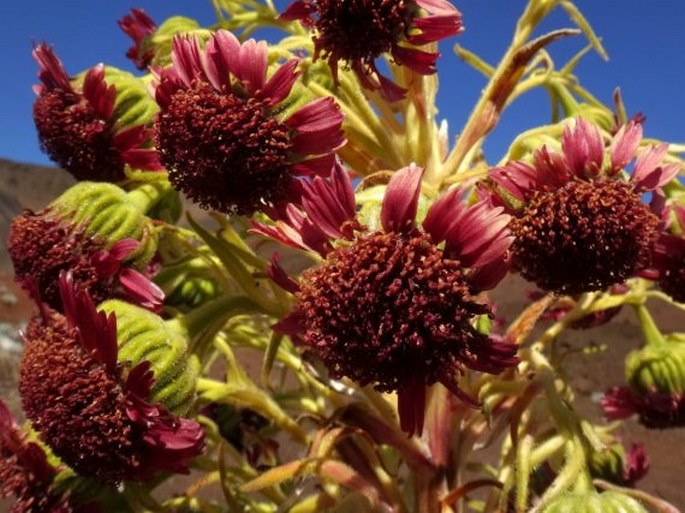
Distribution: Argyroxiphium sandwicense is endemic to Hawaiian Islands and it is found only on islands of Maui and Hawaii. The nominate subspecies is found on the volcano of Mauna Kea on the Big Island (Hawaii) and the subspecies A. s. subsp. macrocephalum (in our pictures) on the volcano Haleakala on the island of Maui.
Ecology: Grows in the crater and on the outer top slopes of the volcano, on dry cliffs and edges of lava fields and on the rocks at high elevations of 2100 to 3000 m. Blooms from July to October.
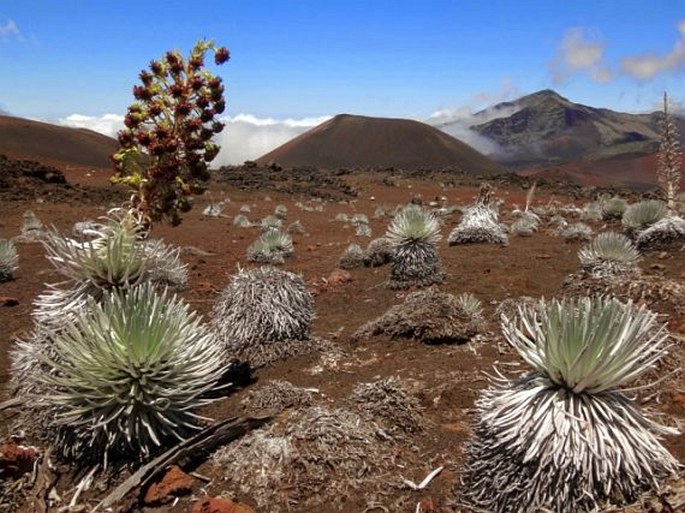
Description: Monocarpic plant taking 15 to 50 years to flowering. Leaves grow in a dense rosette close to the ground, 15–40 cm long and up to 1.5 cm wide, narrowly lanceolate, triangular in cross section, pointy, stiff and covered in silvery hairs for protection against high elevation UV radiation. Flower scape rises from the leaves, erect, usually single, seldom branched, up to 3 m in height and 75 cm in diameter, inflorescence is a raceme of 50–600 heads, nodding, each with 11–42 ray florets, pale red to maroon, and 50–600 disc florets, 5–8 mm long, of similar colour. Fruit is an achene, 7–15 mm long. After seeds ripen the plant dies.
Threat and protection: This taxon was almost extirpated in the past (goat grazing in the crater), however present population appears healthy with about 65 000 plants. The area of distribution is very limited and therefore, it is classified in the Red List IUCN as vulnerable (VU). Protected in Hawaii.
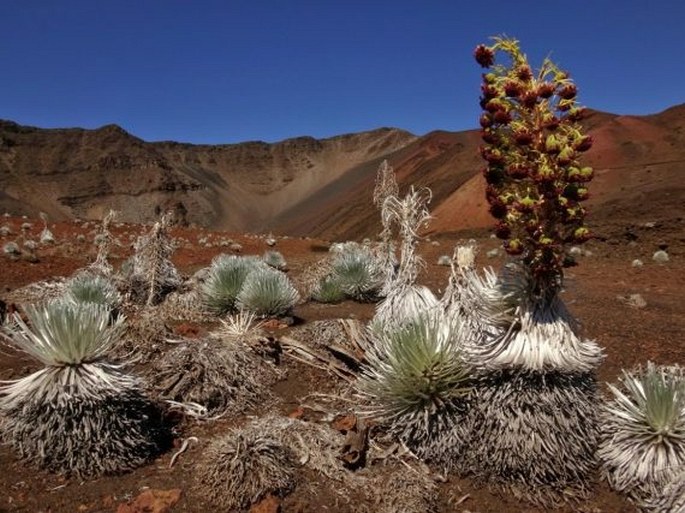
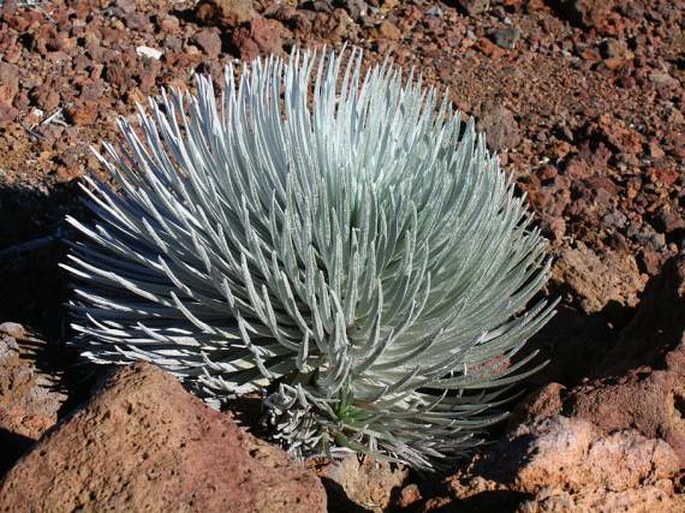
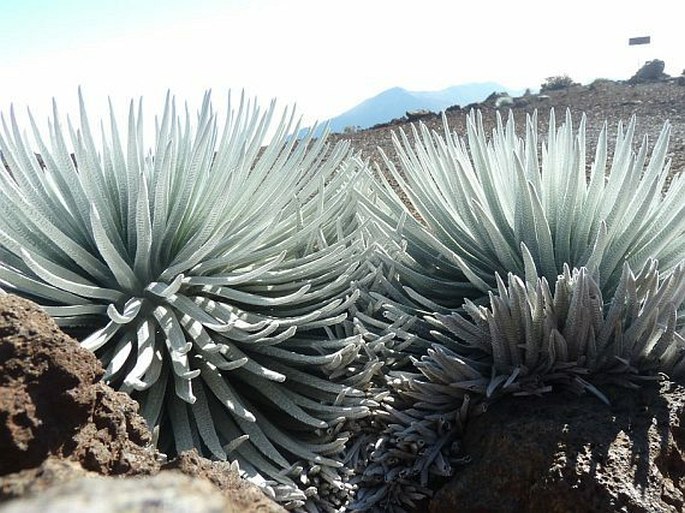
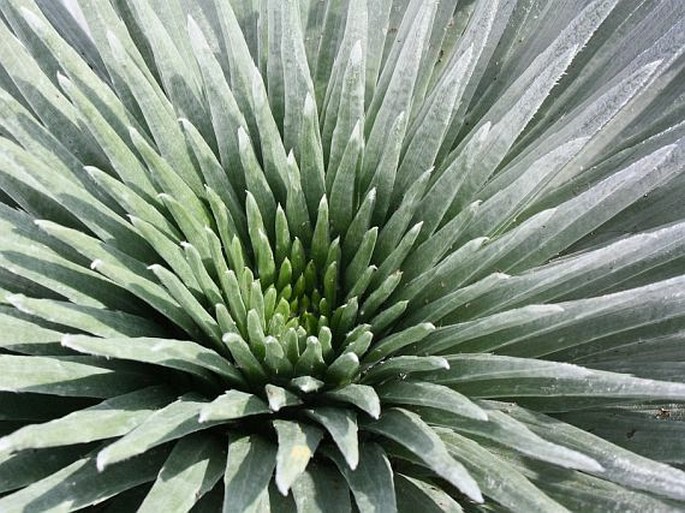
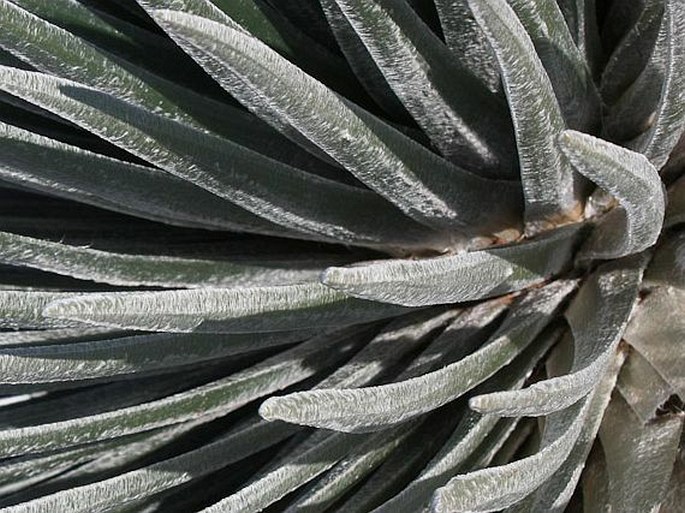
These images were taken in USA, Hawaiian Islands, Maui, Haleakala (by Karel Bergmann junior, March 2014, and by Mário Duchoň, May 3, 2015).


